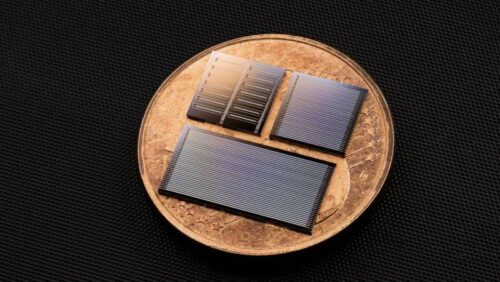Explore the advancements spearheaded by leading researchers, from enhancing electro-optical modulators to enabling more compact and efficient communication systems.

Photonic integrated circuits (PICs) combine various optical devices and functionalities on a single chip, significantly impacting optical communications and computing systems. For years, silicon-based PICs led the industry due to their affordability and compatibility with existing semiconductor manufacturing technologies, despite their limitations in electro-optical modulation bandwidth. Despite these limitations, silicon-on-insulator optical transceiver chips were successfully commercialized, facilitating information flow through numerous glass fibers in contemporary data centers.
The introduction of lithium niobate-on-insulator wafer platforms marks a progression in the development of photonic integrated electro-optical modulators, due to its robust Pockels coefficient, crucial for high-speed optical modulation. However, the high costs and complex production requirements have restricted the broader adoption and commercial integration of lithium niobate. Lithium tantalate, closely related to lithium niobate, presents potential solutions to these challenges. It shares similar electro-optic properties with lithium niobate but offers better scalability and cost-efficiency, already being employed in 5G radiofrequency filters by the telecommunications industry.
A new PIC platform based on lithium tantalate has been developed by researchers led by Professor Tobias J. Kippenberg at EPFL and Professor Xin Ou at the Shanghai Institute of Microsystem and Information Technology. This platform utilizes the material’s inherent benefits to make high-quality PICs more economically feasible.
The team devised a wafer-bonding technique compatible with silicon-on-insulator production lines. They covered the thin-film lithium tantalate wafer with diamond-like carbon and etched optical waveguides, modulators, and ultra-high quality factor microresonators using a combination of deep ultraviolet photolithography and dry-etching techniques, initially developed for lithium niobate and later adapted for the tougher and more inert lithium tantalate. This approach resulted in the creation of efficient lithium tantalate PICs with an optical loss rate of just 5.6 dB/m at telecom wavelength. It also included an electro-optic Mach-Zehnder modulator, capable of reaching an electro-optical bandwidth of 40 GHz and featuring a half-wave voltage-length product of 1.9 V cm.
The research also yielded soliton microcombs on this platform, providing numerous coherent frequencies combined with electro-optic modulation capabilities, suitable for applications like parallel coherent LiDAR and photonic computing. The reduced birefringence in lithium tantalate PICs facilitates dense circuit configurations and broad operational capabilities across all telecommunication bands, leading to scalable, cost-effective manufacturing of advanced electro-optical PICs.
The post Lithium Tantalate In Photonic Integrated Circuits appeared first on Electronics For You.
View more at https://www.electronicsforu.com/news/lithium-tantalate-in-photonic-integrated-circuits.
Credit- EFY. Distributed by Department of EEE, ADBU: https://tinyurl.com/eee-adbu
Curated by Jesif Ahmed